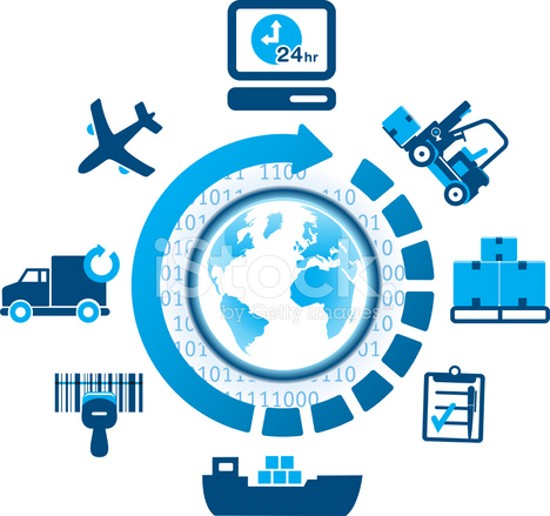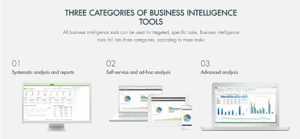Please welcome Carl Torrence who is a Content Marketer at Marketing Digest. His core expertise lies in developing data-driven content for brands, SaaS businesses, and agencies. In his free time, he enjoys binge-watching time-travel movies and listening to Linkin Park and Coldplay albums. In this his first contribution to 21st Century Tech Blog, he is writing about the use of business intelligence tools to automate logistics, key to 21st century supply chains in a world increasingly turning to eCommerce.
Logistics is the management of the flow of things between a point of origin and point of consumption. It is the backbone of an organization’s supply chain. And as trade barriers fell internationally throughout the latter part of the 20th and early 21st century, supply chains ranged far and wide across our planet making them far more complex than ever before.
That’s why it is the right time to begin to use automation and business intelligence (BI) tools in logistics management. Applying these tools will help meet customer needs better, cut down operational costs, and create competitive advantages.
So how do you go about transforming an operation by applying these tools? Let’s take a closer look.
1. Increased Efficiency
In this third decade of the 21st-century automation is becoming integral to logistics for eCommerce, improving the efficiency of supply chain operations.
First, by automating manual, repetitive tasks, a company can ensure that its warehouse staff become more efficient by working on smart tasks that require human expertise rather than have people doing repetitive, mind-numbing manual procedures.
Using appropriate automation tools rather than running a company on a spreadsheet helps maintain data in one place so that it can be reviewed as needed and applied for as many tasks as needed, saving time and money while increasing productivity by a factor of ten. Automation makes the movement and identification of goods, stock checks, goods retrieval, dispatch processing, and packaging far more efficient. A good example is the Lamprecht Transport AG company that uses Inforatec’s Business Intelligence solution to achieve automated data generation, adaptability to individual information needs, and graphic representation of results. They have moved away from Excel spreadsheets and manual procedures as a result.
2. Lowered Operational Costs
Adopting automation for logistics allows companies to get more done while spending less. It allows a business to reduce headcounts by eliminating jobs that are largely manual and repetitive. This works out to be highly cost-effective.
BI also helps to significantly reduce costs by offering insights into different aspects of a company’s operations, forecasting potential risks, helping prepare for unforeseen circumstances, and suggesting alternative practices that help to minimize costs.
3. Better Customer Satisfaction
By meeting customer expectations, businesses improve their retention rates and grow. Automation and BI help here as well by anticipating or eliminating hiccups in logistics operations that can lead to delayed deliveries or incorrect and damaged shipments.
Automation and BI tools can find the most reliable courier service center far more effectively than any manual search. BI risk assessment can anticipate impediments and pre-empt them by offering alternative approaches. And smart automation tools such as Stock Logistic can automate the entire logistics workflow to improve customer service.
4. Improved Supply Chain Visibility
Outdated systems and manual processes make it extremely challenging to foresee supply chain problems such as delayed shipments. With BI, a business can make its processes more transparent and visible, remove bottlenecks, lower costs, and increase customer satisfaction.
5. Better Decision Making
A wrong decision can be a complete game-changer and influence the course of a business’ growth and future. With BI and automation tools, decision-making within complex supply chain operations gets much easier. Instead of wild guesses, business decisions are backed up by BI tools that can point to the best solution. And with all key logistics information in one place, a company can eliminate inefficiencies, remove bottlenecks, win more customers, open up new business opportunities, and improve its return-on-investment.
6. Forecasting and Risk Mitigation
BI helps with proactive planning to mitigate risks better. Foreseeing impending risks can be revolutionary in helping plan a course of action, in keeping customers informed, and in making arrangements in order to minimize the impact of an anticipated challenge.
Without BI this kind of forecasting is almost impossible or at least far more people-intensive. And with risk analytics, a business has the right knowledge and means to navigate tough logistical challenges. A good example is using Pack & Send which offers automated logistics solutions that help businesses identify impending risks and curb financial losses.
Final Thoughts
As customer expectations evolve, it is important for a business to make use of the acquired data it collects and to eliminate overheads caused by unautomated processes that make it less competitive. And even if global supply chains shrink in the face of constraints caused by geopolitics, energy, and climate change, a resilient logistics operation will be needed as businesses in the 21st-century face what would seem to be unforeseen challenges that automation and BI tools can help address.










